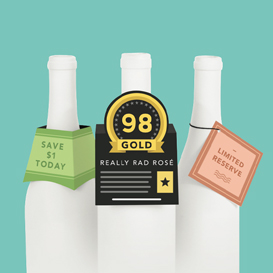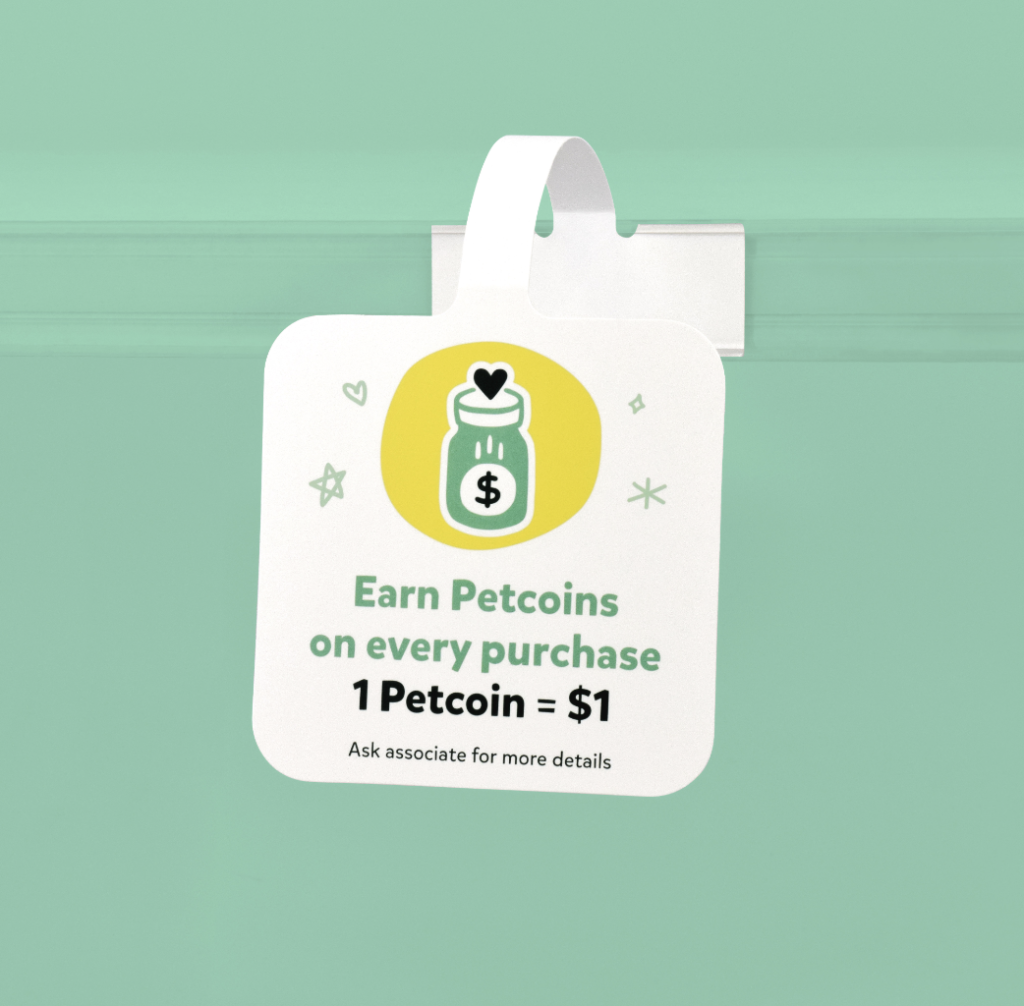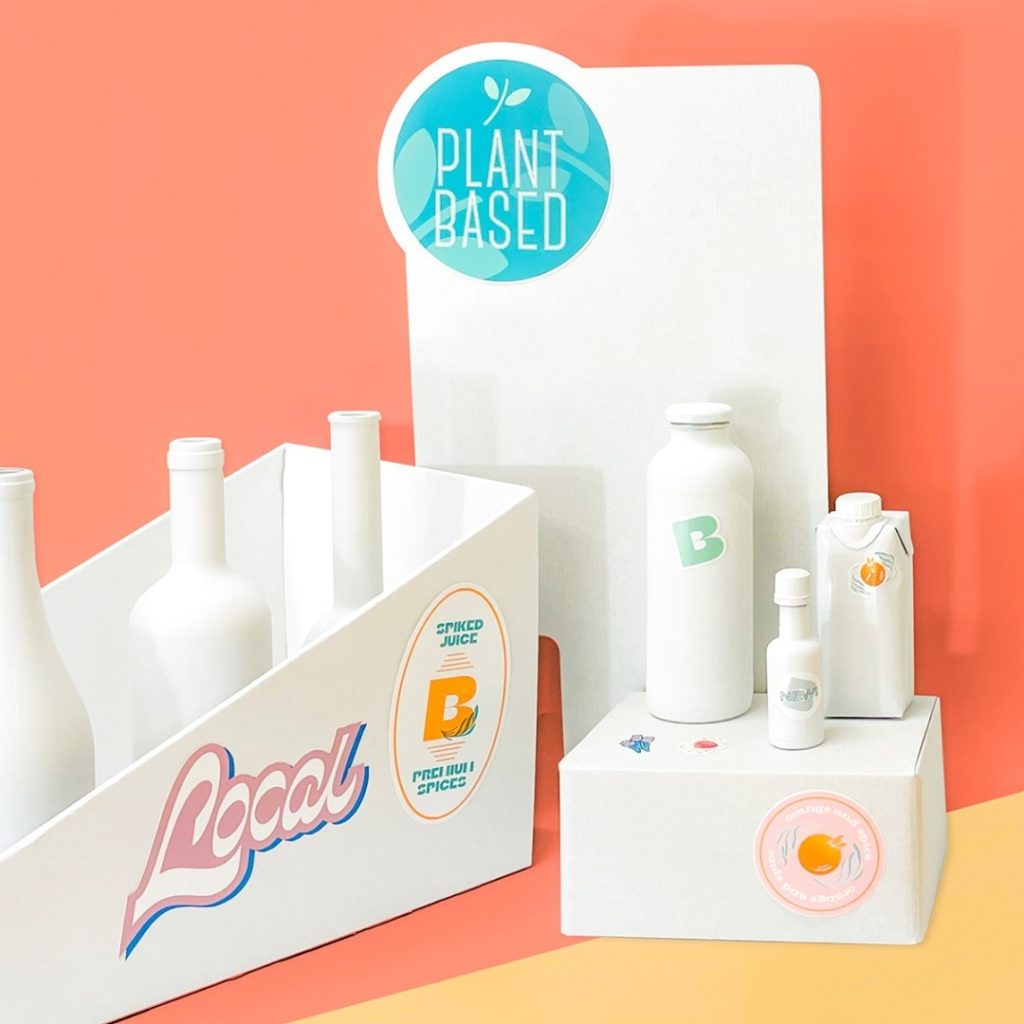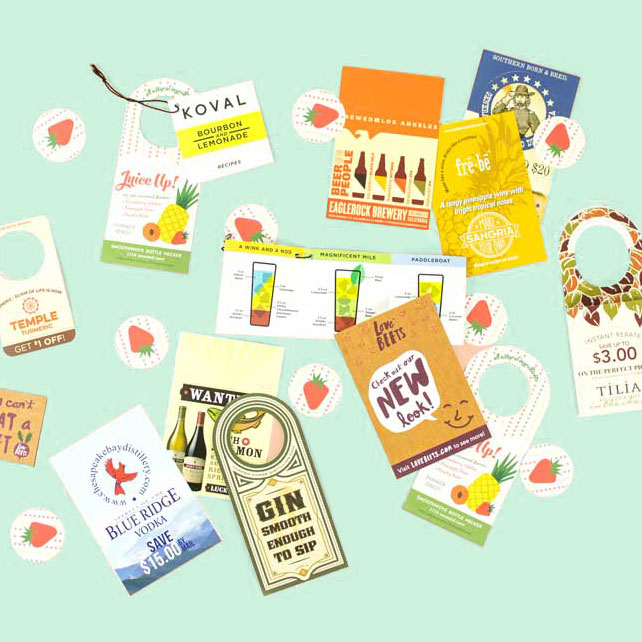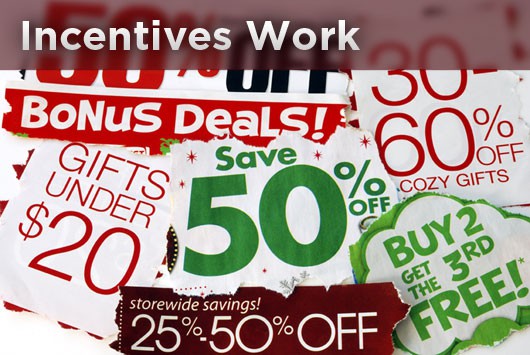| Items | Qty | Price | |
|---|---|---|---|
| $0 |
Trust Us, Incentives Work!
Fact: Customers will be more apt to make a purchase
when offered a deal or a discount.
This is especially true if they’ve never purchased from you before. You haven’t established a level of trust yet. And as anyone in sales will tell you, the more costly the good or service, the harder it is to gain that trust and make that first sale. It’s difficult to convince a new customer to part with their hard-earned money, and one of the most effective ways to assure them you’re the right person for the job is to extend a discount.
So before you use your hard-earned money to print, distribute or publish an advertisement, be sure to add one of the most reliable means of getting the best return on your investment: INCENTIVES!
Types of Incentives
There are several ways to go about offering an incentive. Below are three of the most common, though what you offer depends on your goods or services.
Percentage discounts work well if the value of what you sell varies greatly. As the value of the customer’s purchase increases, so does the dollar value of that coupon.
Fixed dollar amount incentives are best if associated with a single product, service, or package. If the price of what you’re selling only varies slightly (or not at all), you can safely offer a fixed dollar incentive on that item without fear of losing your shirt!
Buy-one-get-one-free deals (BOGOs) are sure to get customers interested. Who doesn’t love the idea of getting something for free? Just be sure you have enough supply to meet the anticipated demand, or enough hours and staff to fulfill requests.
Other Details to Include
Keep in mind, all good deals still need limitations. Be sure to include such standard text as “one per person” or “one per purchase.” It’s also a good idea to mention that it can’t be used in combination with other coupons or sales. These are very common things to say, and trust us, they won’t deter anyone from using the offer.
Lastly, don’t forget to include an expiration date. If a deal is good, but the customer doesn’t have an immediate need for it, they’ll probably hold on to that coupon until they’re ready. And that’s a good thing! Your expiration date can be a week, a month or even a year away — but it’s best to include some kind of date, since you may decide to change prices, goods or services between when they receive it and when they use it.
Once you’ve included an incentive in your marketing piece, it’s imperative that you follow through and give your new customer and the same love and attention you would give a long-term customer. Remember: you’re making an impression and, most importantly, building trust!
